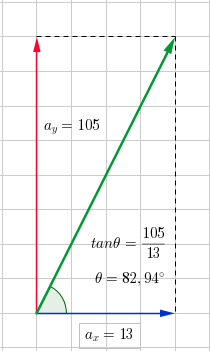#a(t)=d/(d t) v(t)" derivative of v(t) give us a(t)"#
#"derivative of v(t) for x direction:"#
#"..................................................."#
#a_x(t)=d/(d t)(t^2+t+1)#
#a_x(t)=2t+1#
#"fill in t=6"#
#a_x(6)=2*6+1=13#
#a_x(6)=13#
#"derivative of v(t) for y direction"#
#"..................................................."#
#a_y(t)=d/(d t)(t^3-3t)#
#a_y(t)=3t^2-3#
#"fill in t=6"#
#a_y(6)=3*6^2-3=3*36-3=108-3=105#
#"acceleration is a vector quantity so that we have to add " a_x and a_y " as vector"#

#a=sqrt(13^2+105^2)#
#a=sqrt(169+11025)#
#a=sqrt(11194)#
#a=105,80 " "(unit)/s^2#



